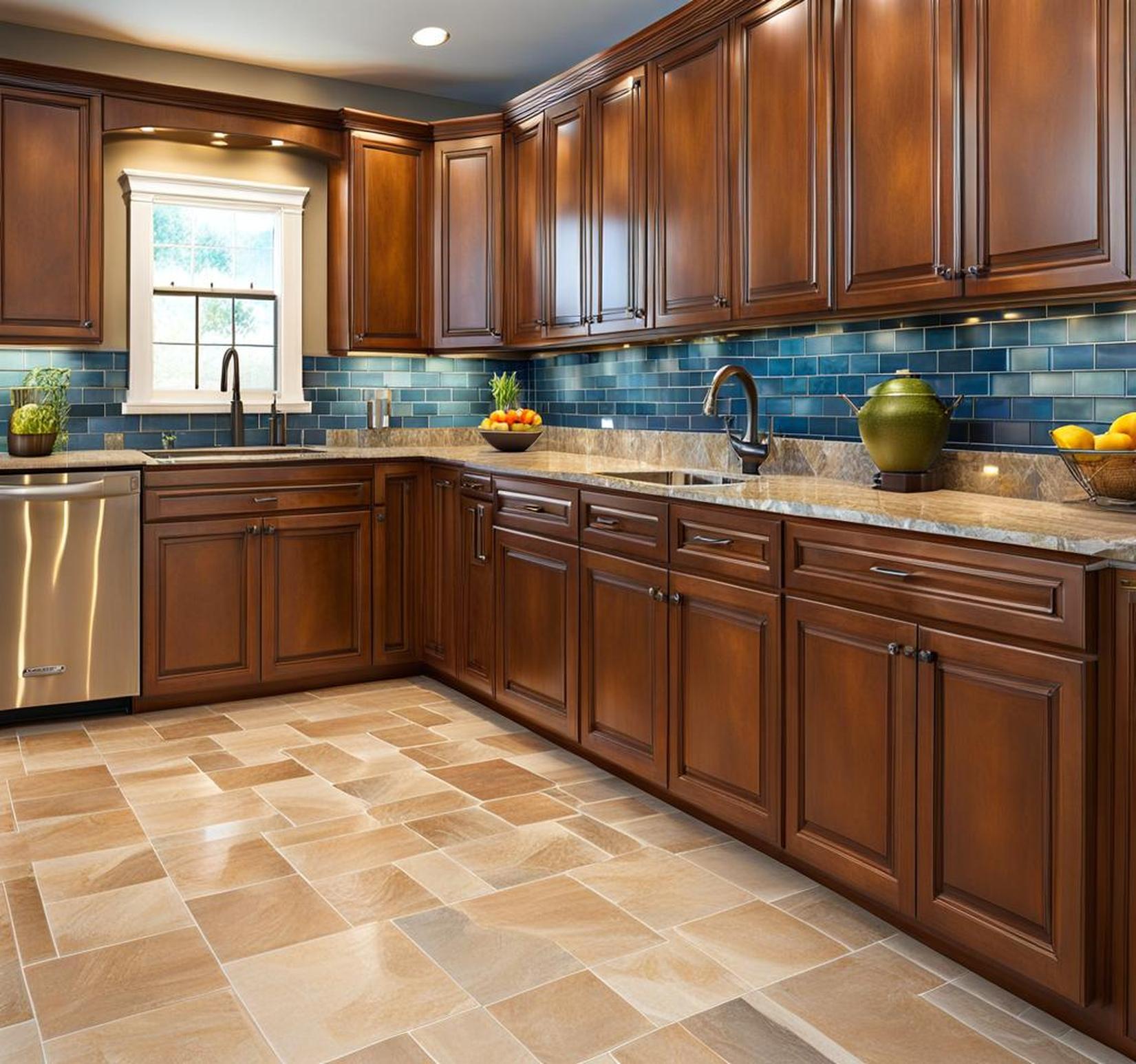When renovating or upgrading your kitchen, one design decision you’ll face is how high to extend the backsplash on the wall. Backsplashes not only provide decoration but protect the wall from water damage, food stains, and grease splatters. The trendy look right now is to continue tiling all the way up to the ceiling for a sleek, polished aesthetic. However, there are a few factors to weigh when determining the optimal backsplash height for your space.
Backsplash Height Options
When deciding how high to tile above your upper cabinets, there are a few common height options to consider:
Standard Backsplash Height
The most traditional backsplash height ends about 4 or 5 feet above the countertops. This allows you to install a finished-looking backsplash without tiling the entire wall behind the cabinets.
Pros:

- Less tile is needed, reducing material costs
- Easier access to the wall behind cabinets for repairs and upgrades
- Lower installation labor time and cost
Cons:
- Can look visually chopped off or unfinished
- Doesn’t protect wall area behind cabinets
Partial Height Backsplash
Another option is to extend the backsplash partially up the wall, either ending at the bottom of the upper cabinets or somewhere in between the countertops and cabinets.
Pros:
- Compromise between standard and full height
- Still provides some visual appeal and wall protection
Cons:
- Can look awkward with weird unfinished edges
- Doesn’t maximize the benefits of a full height backsplash
Full Height Backsplash
The modern, trendy look is taking the backsplash all the way from the countertops up to the ceiling.
Pros:
- Sleek, polished look that feels cohesive
- Protects more wall area from splatters and moisture
- Visually elongates the kitchen by leading the eye upward
Cons:
- More difficult access behind cabinets for repairs
- Higher installation cost with more tile needed
- Extra grout lines to keep clean near ceiling
Factors to Consider for Backsplash Height
When deciding which height is right for your kitchen backsplash, there are several practical factors to keep in mind:
Kitchen Layout and Dimensions
Consider the size and layout of your kitchen. Measure the actual wall area you will be tiling. This will determine how much tile is needed. Also look at ceiling height, proximity to windows and doors, and potential obstacles.
Functionality and Use
Think about how you use your kitchen. Where does cooking happen? What areas need an easy-clean surface for food prep? Full-height backsplash tile where messes occur helps protect the walls.
Aesthetics and Design
Personal style preferences affect backsplash height. Do you want a contemporary, sleek look with full-height tile? Or prefer a more classic partial backsplash? Design elements like cabinetry finishes, countertops, flooring, and decor impact the look as well.
Budget
The cost difference between standard and full-height backsplash can be substantial. Consider tile prices, labor, and long-term maintenance. However, don’t sacrifice quality just to save money either.
Selecting Tile Materials for Above Cabinets
For backsplashes extending above cabinets, stick with kitchen-friendly tiles:
- Ceramic or Porcelain: Affordable, durable, and easy to clean
- Glass: Resilient with modern appeal
- Metal: Bold look that’s water-resistant
Avoid porous natural stone tiles that can stain. Smaller tiles minimize obvious grout lines when viewed from below.
Installing Tile Above Cabinets
Proper installation is key to getting your backsplash height right. Some tips:
- Allow room for accessing electrical, plumbing, vents
- Outlet placement and under-cabinet lighting
- Incorporate floating shelves or niches
Hiring an experienced tile installer is recommended for full height backsplashes.
Maintaining and Cleaning Tile Above Cabinets
Regular cleaning and maintenance keeps your backsplash tiles looking like new:
- Use gentle cleaners, avoid abrasives
- Seal grout periodically to prevent staining
- Steam clean to remove grease buildup
Have a maintenance plan before installing. Hard-to-reach areas near ceiling require effort to keep clean.
Decorative Touches for Backsplashes
To add visual interest to your new full-height backsplash:
- Accent tiles or borders
- Undercabinet lighting
- Floating shelves or ledges for plants
Decorative details help break up large expanses of tile and give your kitchen a customized look.
Determining the optimal backsplash height above your kitchen cabinets requires balancing aesthetics, functionality, and budget. While full height backsplashes are popular for their sleek appeal, they aren’t necessary for every space.
Carefully evaluate the pros and cons of different height options. Take into account your kitchen’s specific layout and how you use the space. This will lead you to the right backsplash height decision for your unique needs and style.
